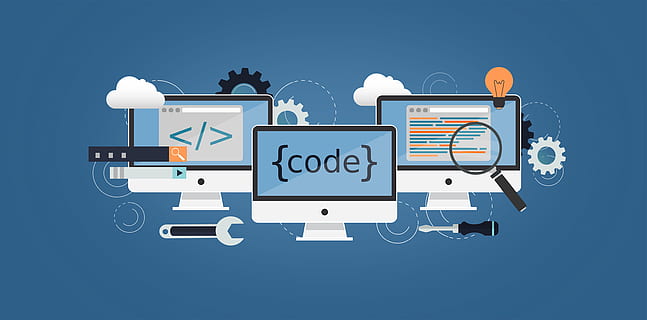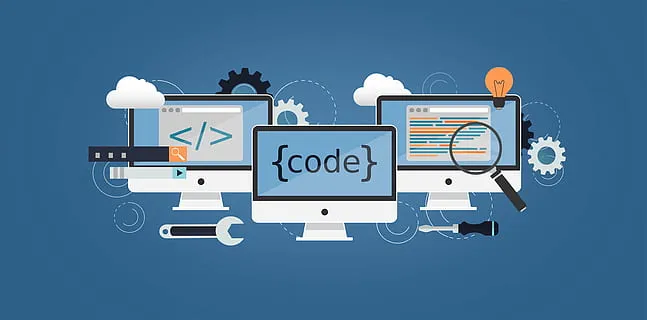Digital Process Automation – Everything You Need to Know in 21st Century
Blog: NASSCOM Official Blog

The tech world is filled with new advancements and jargon. Often, it’s hard to stay track of them. it’s also very easy to confuse between two or more terms because all of them seem alike.
Digital Process Automation (DPA) has been a victim of this confusion. it’s a crucial aspect of digital transformation and has taken the front seat today. this is often why it’s imperative for each organization to know what it’s and the way it’s different from seemingly similar techniques. Our article is devoted to supplying you with all the answers associated with this.
What is Digital Process Automation (DPA)?
Digital Process automation is that the process of automating business processes for the higher . once we say better, we mean efficiency-wise and in terms of overall effectiveness. In other words, Best No-Code Platform it helps you optimize processes through digitization. Digital workflow is made , which improves the main target of all team members.
Forrester further subdivides DPA into “Deep” and “Wide” categories.
DPA-deep aims to rework and improve the business process. DPA – deep projects have alittle number of highly skilled designers. Narrow, deep, and sophisticated processes are the main target . DPA – Deep helps enterprise architects understand where to innovate and the way to standardize a process and provides metrics and tools for continuous improvement.
DPA-wide is meant for the masses. The goal of DPA is to increase process design beyond small, highly skilled development groups to business users. many users and applications are the planning target. Projects for DPA should be managed by the business and delivered using low-code no-code platforms and agile methods.
Digital Process Automation (DPA) vs. Business Process Automation (BPA)
When you simply read the definition of DPA, you’ll find that it sounds almost like BPA. But, there are quite few differences, which are highlighted below:
DPA comes in once you need to start digitizing the processes. BPA comes in once the processes are digitally documented and only automation is left.
DPA is typically applied not only to processes in business but it’s far more scope and isn’t limited thereto . BPA is restricted to the business process (as the name suggests). Best No-Code Platform DPA’s focus is on the operation and not on the result .
Digital Process Automation (DPA) vs. Robotic Process Automation (RPA)
As per Forrester, RPA may be a subset of DPA. it’s the last word low-touch approach for process improvement. RPA assumes that the method will stay as-is and builds bots that replace low-value human hours. Populating tables, quality and testing, desktop consolidation, and replacing data entry tasks are typical targets.
Examples of Digital Process Automation – How organizations can use DPA
Organizations can use DPA in multiple areas like pricing approvals and customer onboarding. Once these processes are digitally automated and improved on a daily basis, organizations immediately have the sting over the remainder . Below, we’ve discussed a couple of specific samples of how DPA are often enforced within the workplace.
1. Workflow automation
Workflows are often automated from start to finish to make sure that the entire sequence occurs seamlessly. The workflow can also include escalations, approvals, reminders, and other sub-processes.
2. Compliance obligations
With DPA, accuracy increases. This eliminates errors and missed steps. Meeting the regulatory obligations is thus easier and has no bottlenecks.
3. Paperless documentation
Once DPA comes into full force, customized digital forms take the place of paper documents. These forms are often edited and updated as per requirement, and connected to varied workflows as per the need . Capturing data and managing it’s thus completely digital, removing the necessity for paper forms altogether.
4. Fixing outdated processes
Before automating, organizations can refine and update their processes. After this, automation takes care of optimization and increased efficiency. Manual work are going to be minimal and each step will suits the company’s regulations henceforth.
5. Governance
Governance may be a major a part of automation and DPA helps establish it across the organization. If you’ve got an enterprise-grade DPA platform, it’ll help IT support the method through control and governance. Role-based access are often given, for instance , and integration management are often centralized to enhance security.
The post Digital Process Automation – Everything You Need to Know in 21st Century appeared first on NASSCOM Community |The Official Community of Indian IT Industry.
